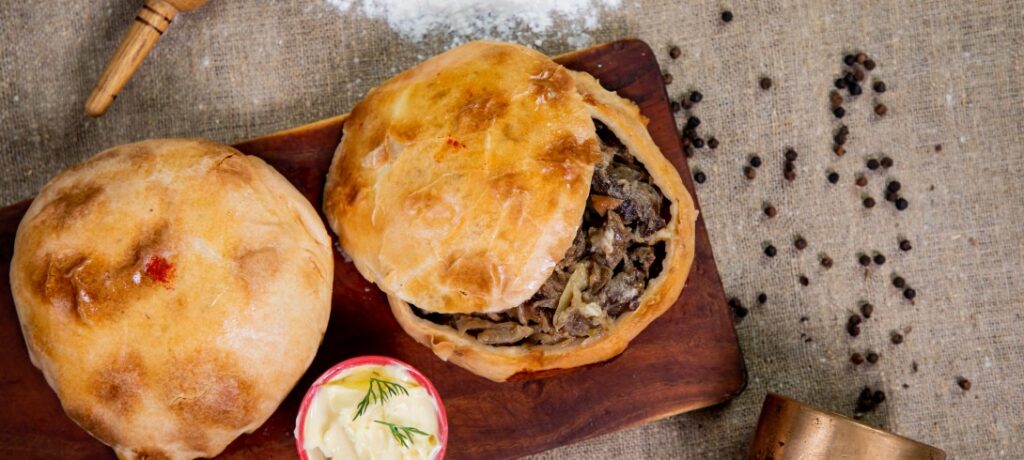AMAZING JIZZAKH SAMSA
It is no exaggeration to say that the Uzbek samsa (also somsa) is now known all over the world. Uzbek restaurants are growing in popularity and can be found in many countries of the world. And samsa has always been an integral part of Uzbekistan’s traditional gastronomic wealth, especially samsa with meat and kurduk.

The samsa is a flour based product. In Uzbek cuisine, it is usually round and traditionally baked in a tandoor, although triangular samsas baked in a gas oven is also common today. Even within Uzbekistan itself, samsa varies from region to region, and the discerning gourmet has the opportunity to experience a variety of different flavours by tasting, for example, The Alot samsa contains tomato, while the Samarkand samsa comes with a characteristic set of spices. There is even a Turkish Uzbek samsa with cheese, which has been invented relatively recently and is more for tourists.
The Jizzakh samsa is considered a gastronomic masterpiece. It has long been a favourite dish of locals and visitors alike, and is considered the gastronomic trademark of Jizzakh. The way it is prepared surprises those who taste it. The secrets of samsa making have been handed down from generation to generation for several centuries. There is no unanimous opinion about how and when it first appeared, and each institution will tell you its own, different version.
What can be objectively said about the characteristics of Jizzakh samsa? First of all, its weight is astonishing. The size of the samsa is three or four times bigger than the average, and for tourists it can become a main course, after which there is no room to tast anything else!
Secondly, the samsa dough is very thin and the meat (usually mutton) is coarsely chopped. This allows the filling to be cooked so that it retains its juices and flavour. Onions and a little fat are also added to the filling to keep it juicy and rich in flavour. Because of its size, such a samsa is often eaten with a spoon, like soup.
Thirdly, the samsa is cooked in a vertical tandoor. The raw product is placed on the walls and cooked under the influence of dry heat and pressure. Curiously, despite its size it does not fall down in the tandoor. This is a secret of the Jizzakh masters.
Local people call it “Qipchoq somsa”, which means “samsa from Kipchak”. There is a saying: “If you have no physical strength left, go to Kipchak and eat samsa”. According to one version, this refers to the Kipchak mahalla (district) in Jizzakh.
If we take into account the climatic conditions of Jizzakh, we can explain the love and reverence felt locals for this dish. It is a fact that in Jizzakh there are very cold winters, during which a hot and juicy samsa will warm and fill you with strength, and during hot summers, it replaces a full meal. It should be noted that the flavour of this dish is therefore very difficult to reproduce elsewhere. This is due to the special climate, sun, water and air. Vegetables and grasses grown on this fertile land have a bright flavour.
Nowadays you can find many videos on YouTube and TikTok showing Jizzakh samsa from all angles, but this magnificent dish is worthy of personal acquaintance wherever you are from.
By Taina Kaunis
